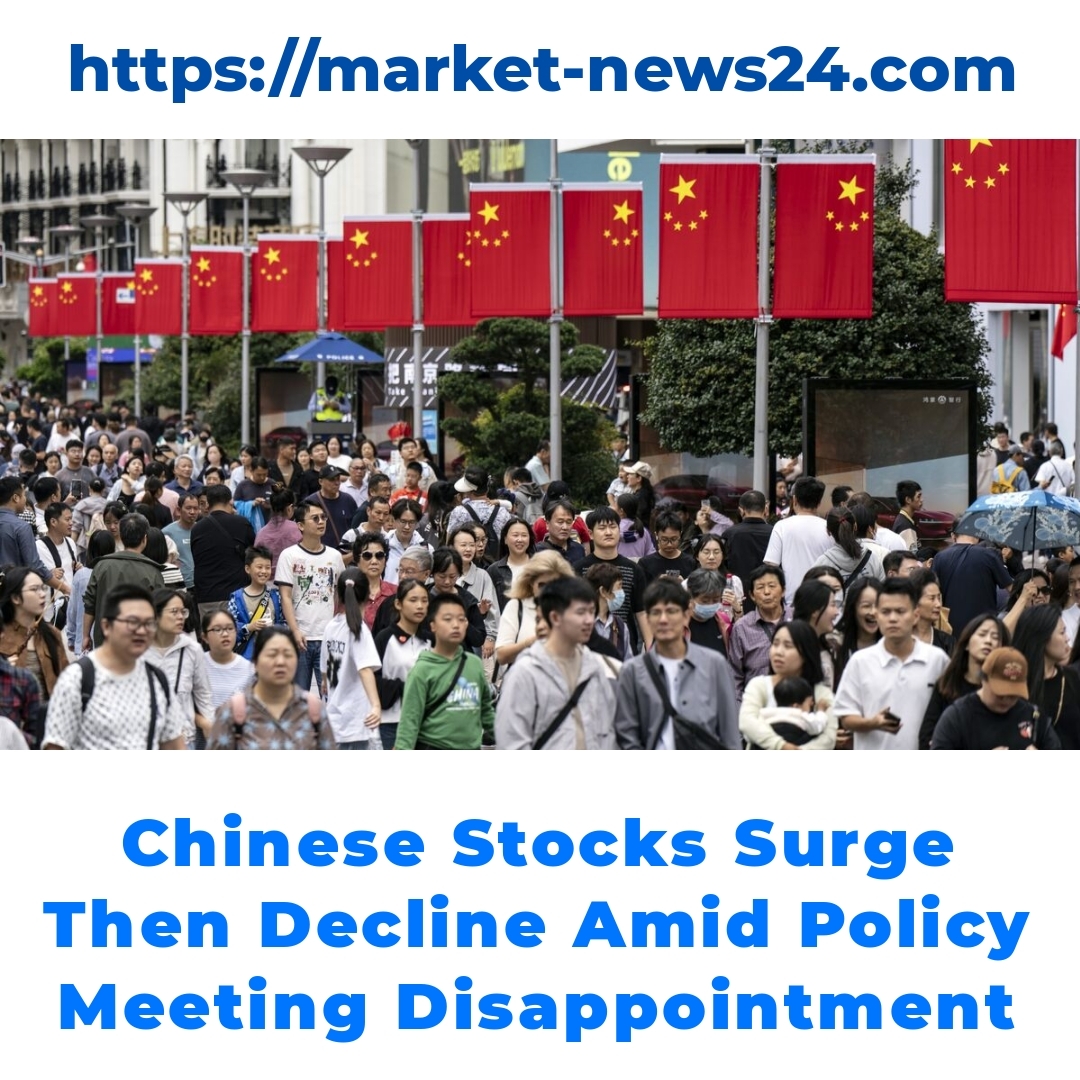The performance of Chinese stocks has undergone a notable transformation following a weeklong trading break. Initially, there was a significant surge in the market, with an impressive increase in the onshore benchmark. However, this enthusiasm quickly faded as investor sentiment shifted due to unmet expectations surrounding key economic indicators and a policy meeting. Understanding the interplay of these factors is crucial for those navigating the dynamic landscape of Chinese markets.


The Initial Surge: Onshore Benchmark Performance
As trading resumed, investors witnessed an impressive 11% increase in the onshore benchmark. This surge captured the excitement and attention of many, leading to a positive feeling among market players. It was a refreshing change after the weeklong break, and it had many investors optimistic about what lay ahead. The initial trading patterns were quite telling, with many stocks soaring right out of the gate, signaling a strong demand as everyone returned to the market ready to trade.
However, even though this boost inspired confidence, it also set a high bar for expectations among investors. The excitement of the reopening painted a vivid picture of potential growth, but it also created a sense of anticipation that was hard to sustain. Understanding the dynamics of this initial surge plays a key role in grasping how investor sentiment can shift in the blink of an eye.
The Disappointment: Lack of Major Stimulus
Amidst the initial excitement, all eyes were on the recent policy meeting that many thought would bring about a significant stimulus to support continued growth. However, when the meeting concluded without bold actions, disappointment started to bubble up. Investors had hoped for clear directions or incentives that could fuel further gains in the Chinese stocks market.
A lack of robust economic indicators and an absence of detailed plans for stimulus contributed to this unrest. With the global economic landscape still fragile, missing out on this opportunity left many investors feeling uneasy. The anticipated measures that could have driven the market higher never materialized, leading to rising frustration among those who had entered the market during the initial surge.
Market Enthusiasm Fades
As the days went by following the hype, market enthusiasm for Chinese stocks began to dwindle. Those early gains started to evaporate as the realization set in that investors were left wanting more than what had been offered. Continuous fluctuations in stock prices painted a picture of a hesitating market, where uncertainty took center stage.
Investors who initially jumped on board soon found themselves reassessing their positions as the landscape changed. This fading enthusiasm is a critical aspect for traders to pay attention to, as it highlights the volatile nature of the market. A clear understanding of how market mood can shift dramatically after events like a policy meeting is vital for anyone looking to navigate these choppy waters effectively.
Real-Time Impact: Investor Sentiment in Chinese Markets
Delving into investor sentiment surrounding these events offers further clarity. Before the policy meeting, optimism ran high among traders, bolstered by the onshore benchmark’s surge. Post-meeting, however, the mood shifted sharply. This change illustrates how quickly sentiment can turn, influenced heavily by policy decisions and broader economic forecasts.
It’s crucial for investors to recognize that market enthusiasm can pivot significantly based on such meetings. The interaction between sentiment and the fluctuations of Chinese stocks after the trading break is a reminder of the market’s unpredictable nature. Being aware of these shifts helps investors make more informed decisions and stay ahead of potential downturns.
Conclusion
In summary, the journey of Chinese stocks following the recent trading break has been quite a rollercoaster. The initial surge in the onshore benchmark set an optimistic tone, but the subsequent disappointment due to unmet expectations from the policy meeting highlights the volatility of the market. By keeping an eye on economic indicators and upcoming policy meetings, investors can better navigate this ever-changing landscape.
For anyone engaged in trading, understanding these market dynamics is key. Being informed not only helps in making wise investment strategies, but it also equips investors with the knowledge needed to handle any sudden shifts that may arise. So, whether you’re a seasoned investor or new to the game, it’s essential to stay aware of developments in the Chinese stocks market.
Call to Action
Stay updated on the latest developments in Chinese stocks and the broader economic landscape. Whether it’s tracking market trends or refining investment strategies, there’s a lot to gain from being informed. If you want to delve deeper into these insights and keep up with market movements, consider subscribing for more updates on investor strategies and trends.
FAQ
What caused the initial surge in the onshore benchmark?
The onshore benchmark saw an impressive 11% increase as trading resumed after a weeklong break, driven by a strong demand as investors returned to the market.
How did investor sentiment change after the policy meeting?
Before the policy meeting, investor optimism was high, but after the meeting concluded without significant stimulus measures, sentiment shifted negatively, leading to disappointment among investors.
What impact did the lack of stimulus have on the market?
The absence of robust economic indicators and clear directions from the policy meeting created unrest among investors, leading to a dwindling enthusiasm in the market.
Why is understanding market sentiment important for traders?
Understanding market sentiment is crucial as it can change rapidly based on economic events and policy decisions. This helps investors make more informed decisions and navigate market fluctuations effectively.
What should investors keep an eye on following the initial surge?
Investors should monitor economic indicators, policy meetings, and overall market trends to better navigate the unpredictable nature of the market and adjust their investment strategies accordingly.
How can investors stay updated on the Chinese stocks market?
Investors can stay updated by tracking market trends, subscribing to financial news outlets, and following expert analyses to refine their investment strategies based on the latest developments.





